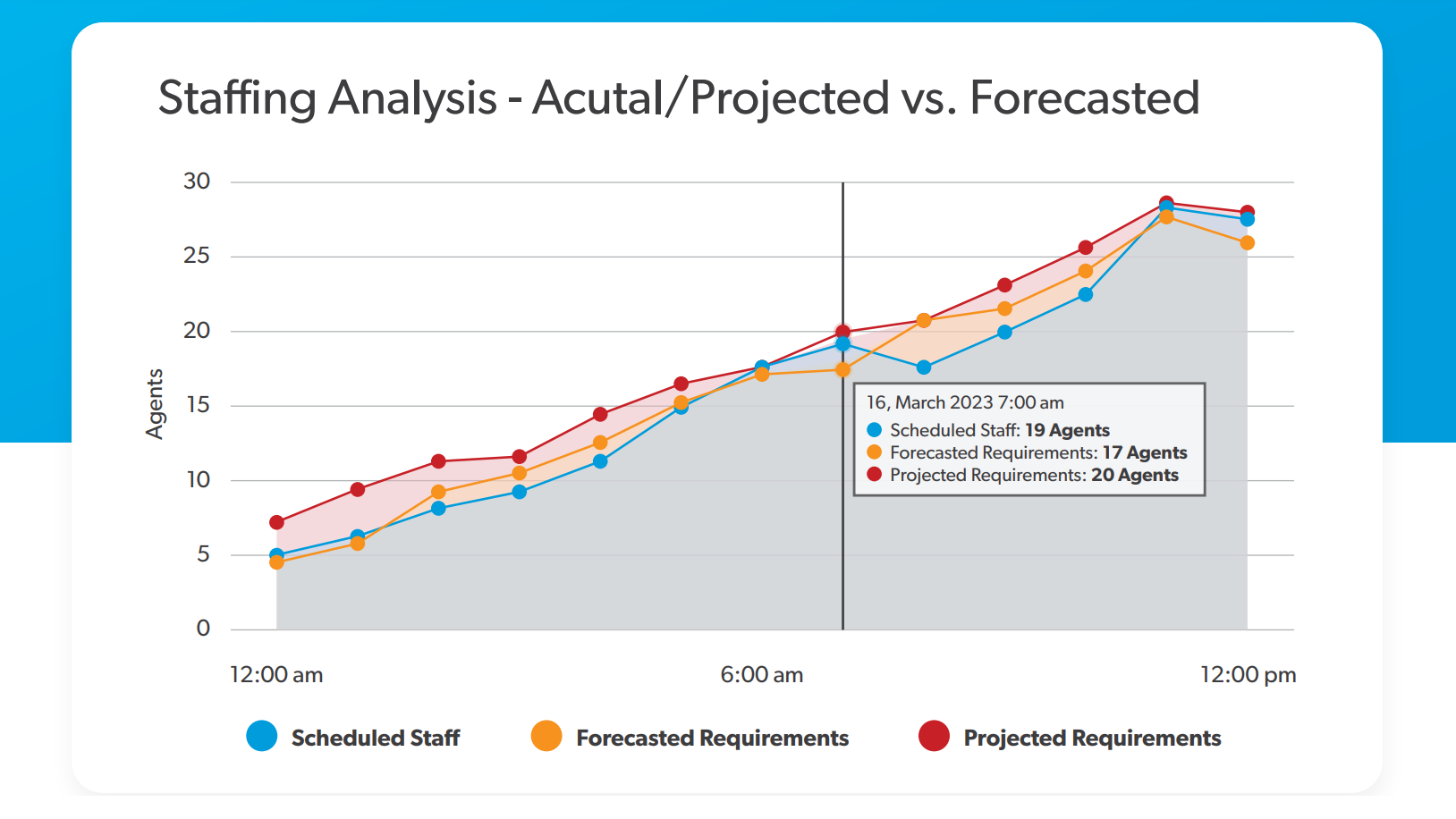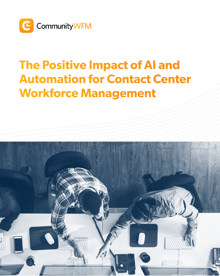
It feels like right now discussions about AI topics are happening everywhere. Technologies like ChatGPT are all over the news, press releases are commonplace, and advertising around the latest conversational AI contact center solutions are tough to miss.
Discussing and promoting AI may draw interest, but taking a step back it can be difficult to define exactly what type of technology is truly AI and what is automation or even something else.
This is especially true when it comes to workforce management (WFM) software. As an industry focused on data driven decisions, automation has been a foundational piece of WFM software for decades.
So how exactly is AI utilized within this technology? Let’s take a look at some of the top contact center AI solutions found in WFM software and how they work closely alongside automation to improve operations and efficiency.
Intraday performance reporting – Probably the best use case of AI for contact centers when it comes to WFM software exists within the intraday performance (IDP) report. At its core, this report takes historical data to project future staffing needs within a contact center. The AI powering this information can spot unique forecasting and scheduling vulnerabilities in real-time and flag them as requiring attention. A variance analysis, also using AI, helps to indicate which actions a contact center should take for the rest of the day.
For example, a contact center may have forecasted a need for 17 agents on a Tuesday. However, after receiving last minute news of a product promotion, 19 agents were staffed. The IDP report closely monitors agent productivity throughout the day and can let a WFM analyst know if more or less agents are needed. If the promotion is successful and has exceed expectations, additional agents will be recommended within the IDP report. From here, the WFM analyst can leverage automated scheduling to increase head count quickly. A solution like this is a real and everyday use case of contact center artificial intelligence.
Skill-based scheduling – The way AI is used here relates closely to automation. Simply put, modern WFM software has the ability to track the unique skills of each agent. This is important because you don’t want to immediately put a strong chat agent on a phone shift because “an agent is an agent”. AI and automation within WFM software attempts to fit an agent to a specific skill when a schedule is created. This means the software will evaluate all options to schedule the chat agent as much as possible as their top channel first before moving them to a different (and weaker) channel.
Assessing phone states – Taking another step towards being an AI powered contact center means leveraging technology to instantly assess the phone states of agents. Within WFM software, it’s possible through AI and automation for an analyst to monitor the adherence state of each agent and team based on phone activity. States are toggled automatically and stored as logs in the software so staffing adjustments can be made by reviewing the data. If phone states are “active” at a much lower rate than normal throughout the day, it may signal that something is wrong in the contact center and management should be notified of this anomaly.
To summarize, while WFM software is still primarily based around automation, there are some contact center AI solutions that exist and can be leveraged to assist with making smarter decisions. Improving your contact center intelligence isn’t something that happens overnight or through one solution. Instead, it requires a mix of AI and automation across your entire technology stack to drive noticeable improvement.








